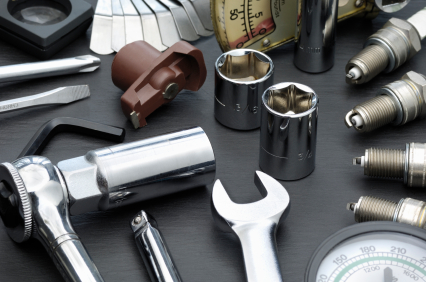
Electric car parts should presumably last forever. The reality tends to be somewhat different. Although a number of electric car parts will endure for the life of the vehicle, others will eventually fail. Most parts will last a long time due to the fact that they are static and don't wear out. The parts which will endure the most trouble on an electric car are the mechanical parts that constantly move, such as the motor's bearings and the transmission's drive shaft.
Battery
Electric car batteries power the motor which drives the car. The batteries consist of the largest and most centralized component on an electric car and weighs upwards of 1000 pounds. Eventually, the batteries due retain "memory loss", which basically means that the battery can no longer "remember" to hold a charge for a sustained period of time. However, it should be noted that this will happen after hundreds of thousands of miles.
The length of battery life depends largely on the type of battery in the car. Some batteries will need to be replaced after just 3 years while the lithium-ion batteries are designed to last for 10 years - although electric cars haven't been around long enough to prove that claim. Only time will tell.
Replacing a battery is a relatively big job, and not something that can be undertaken at home. Moreover, to date, there are very few garages that have the equipment to manage battery replacement. If the batteries do indeed need to be replaced, the task must be carried out by the dealership that's accustomed to servicing the brand itself.
Motor
The motor of an electric car only contains a couple moving parts: the rotor which spins inside the electric motor and the bearings that support it. This is simple compared to a conventional internal combustion engine, which has hundreds of moving parts, like pistons, connecting rods, crankshafts, valve springs and valves. Electric motors are virtually maintenance-free in comparison.
Steering and Suspension
Although electric car parts shouldn't wear out, parts found on the vehicle outside of the electric motor and battery do, mainly from friction. These parts are also shared with conventional vehicles. Two areas where parts will need to be replaced periodically are in the suspension and steering system. Ball joints, tie-rod ends, bushings and joints all need to be replaced in regular service intervals, just like conventional vehicles.
The life of these parts should be about the same as in regular vehicles although they could last longer since electric cars don't develop as much NVH, or, noise, vibration and harshness. This means you should expect to see longer service intervals for suspension and steering parts.
Brakes
Without good brakes, you're not going to stop effectively. A lot of electric cars utilize Regenerative Braking Technology to reclaim some of the energy produced within the drive train and keep the battery topped off. This, however, has no effect on how long the brakes will last. In fact, brakes found on Hybrids and EV vehicles tend to last longer, because the electric motor can be used to help to bring the car to a stop.
The brakes should be checked every 20,000 miles and the discs replaced after four to five service intervals. This, however, will predicate on how the manner in which the car is driven. Cars that are driven hard or abused will need their brakes and tires replaced more often. Cars that are driven as directed will benefit with longer service intervals, which will save you even more money.